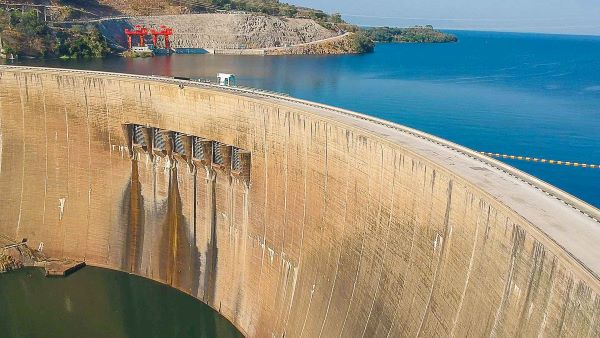Water in the main power generating plant-Kariba Dam has slumped to its lowest ebb spurred by climate change with Zambia and Zimbabwe under threat of sustained hydro power generation, it has been learnt.
Water levels at Kariba North Bank and Kariba dam have drastically reduced below 500 metres above sea level, threatening the country’s capacity to maintain its effective power generation as the climatic change crisis continues.
Zambia’s power utility Kariba North Bank station director Wesley Lwiindi, water in the Kariba dam has slumped to its lowest levels since 1995 with the company recording 478. Metres above the required levels, representing a three percent drop compared to last year.
The current water levels are a threat to the future of the turbines that drive the water for onward power generation and the company would be forced to either resume power rationing as proposed and due on 16 November-though delayed to ensure the equipment was safe.
The water levels are extremely low at the moment and we are literally breaking new records in terms of low levels in the reservoir because the levels have become lower than was recorded last year,” he says in a statement.
Zesco, on Thursday undertook a tour of the dam to assess the declining water levels. It was learnt that the heightening water crisis is forcing the company to seek to induce load management especially to high power consumers, including industries who are expected to reduce the intake of electricity.
Arguably, the scenario entails that Zambia has utilized 99.5% of the water allocated to the energy company for power generation at Kariba dam. Zambia and Zimbabwe both get an average annual water allocation of 22.5 billion cubic litres from the Zambezi River Authority-the regulators of the water in the Zambezi for use.
Zambia and Zimbabwe-water consumption from Zambezi river for hydro power generation is under threat as climate change continues decimating the water-in the 62-year-old man-made lake-forcing regulators to ratio to save equipment by applying load management systems.
According to ZRA, the water levels in the Kariba reservoir are plunging rapidly, threatening hydroelectricity production for Zambia and Zimbabwe.
The climate change effects are forcing water levels closer to reaching the 1995/96 season, the lowest recorded since the 128-meter (420 feet) high dam was completed in 1959.








